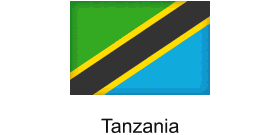 Nyerere National Park
Nyerere National Park
NYERERE National Park (formerly the northern part of Selous Game Reserve, pronunciation: "Seluu") is the largest national park in Tanzania and also one of the world's largest wildlife sanctuaries.
The total area of the park is 30,893 km2 (11,928 sq mi) and covers the Matemwe, Morogoro, Lindi, Mtwara and Ruvuma regions. The area is larger than 70 countries in the world and is estimated to be twice the size of Costa Rica (Central America) and about twice the size of Belgium (Europe). Much of the area is in a natural state without being disturbed by human activities.
The part of selous game reserve accommodates hydroelectric power plant that is still under construction.
The park has great river known as Rufiji River. Rufiji has some kind of marine animals such as Crocodile and hippopotamus. The original Selous Game Reserve traces its roots to 1896 when the then German Governor of Tanganyika proclaimed this vast area as a protected wildlife hunting reserve.
Sometime in 1922 the reserve was named after Frederick Selous, a big game hunter turned wildlife conservationist.
In 2019, it was decided by the Government of Tanzania that to further develop and enhance tourism in Selous, the northern part of the reserve will be excised to form the a new national park to be known as the Nyerere National Park, in honor of the first President of Tanzania, Mwalimu Julius Kambarage Nyerere.
This new park was formally gazetted as a National Park in 2019 and now falls under the administration of Tanzania National Parks Authority Nyerere National Park is home to several species of wildlife: lions, wildebeests, giraffes, zebras, hippopotamuses, rhinos, antelopes, hyenas, African wolves, and a large number of crocodiles in the Rufiji River.
Most notably the park is also known for its prolific population of African Wild Dogs. Previously and even now, Selous Game Reserve and by extension, Nyerere National Park, was home to a large number of elephants but due to poaching, the numbers dropped somewhat and it is now hoped that converting part of the reserve to a National Park will help control and minimize poaching.
